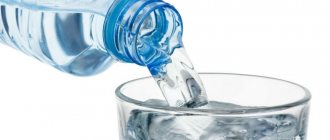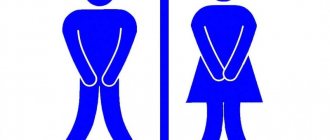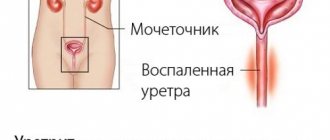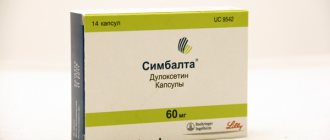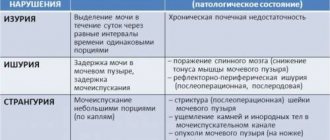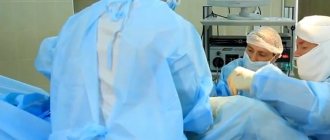To treat inflammation with injections, 3 types of antibiotics are used: cephalosporins, aminoglycosides, fluoroquinolones.
Cephalosporins
This group belongs to beta-lactam drugs with a bactericidal effect. The active substance molecule consists of 7-aminocephalosporanic acid (7-ASA). The first generations of cephalosporins were not resistant to beta-lactamases, and therefore were quickly destroyed by gram-negative bacteria. Treatment of urological diseases was not effective.
The latest generations of beta-lactam antibiotics inhibit enzymes that destroy them and have the greatest antimicrobial activity. Antibacterial drugs have the least side effects and are considered safe. Some cephalosporins strongly irritate the walls of the stomach, so they are used only as injections. For the treatment of acute cystitis, preference is given to the studied 2nd and 3rd generation cephalosporins:
- Cefuroxime. The antibiotic is known under the names: Zinnat, Megasef, Ceftin, Cefurus. It has a bactericidal effect against a wide range of gram-negative and gram-positive microorganisms, anaerobes, streptococci and staphylococci. Due to its low toxicity, the drug can be prescribed to newborns. The course of treatment with injections is 2–3 days. If necessary, treatment is continued with oral administration of the drug in the form of a suspension for 7–10 days.
- Ceftriaxone. A potent antibiotic of the 3rd generation of cephalosporins. A distinctive feature is low toxicity. Injections can be used during pregnancy (except the 1st trimester) and for young children. The antibiotic is available only in powder form for injections, which, according to patients, are quite painful.
To reduce discomfort in the gluteal muscle, with the permission of the attending physician, you can use Emla anesthetic cream half an hour before the injection.
Ceftriaxone is diluted with water for injection, Lidocaine 1% or Novocaine. Lidocaine is preferable, it dissolves the medicinal powder better, does not clog the needle and provides more pain relief.
Antimicrobial drugs with a similar active ingredient are: Medaxone, Loraxone, Cefson.
1st generation cephalosporins are used to treat chronic cystitis. These include: Cefazolin, Cesolin, Cephasex. Available only in powder for intravenous or intramuscular injections. The antibiotic has less antimicrobial effect, but can be used during breastfeeding (for medical reasons). The active substance is almost not absorbed orally and does not pass into breast milk.
If treatment with penicillin does not produce positive results or there is an allergy to them, cephalosporins are prescribed.
In addition to Cefazolin, Cephalexin is used to treat chronic inflammation of the bladder. It is available only in tablets, and has contraindications:
- Allergy to the active substance.
- Gestational period.
- Lactation.
In case of renal and liver failure during the treatment of infections, Cephalexin is used with caution.
Aminoglycosides
Antimicrobial drugs from this group contain amino sugar molecules, which bind to the ribosomal subunit and block protein synthesis and the cytoplasmic membranes of the bacterium. Aminoglycosides are not absorbed in the gastrointestinal tract and are not available for oral use (except for Neomycin).
Antibiotics have significant bioavailability, the substance is well distributed in the extracellular fluid and penetrates the placenta. The therapeutic effect lasts for 8 hours.
Aminoglycosides are excreted unchanged by the kidneys; the concentrated substance passes through the urinary tract in the urine, which makes it possible to successfully treat cystitis. In case of renal failure, the elimination period of the drug is prolonged, and accumulation of the active substance may occur, which should be taken into account when prescribing the dose.
Antibiotics are active against gram-positive staphylococci, streptococci, and some gram-positive microbes. Does not affect anaerobic bacteria. 2nd and 3rd generation medications are effective against Pseudomonas aeruginosa.
Aminoglycosides are not metabolized in the liver and are excreted by the kidneys. Drugs in this group should not be used for severe renal impairment.
Antibiotics have a toxic effect on the embryonic development of the fetus, so using the medicine during pregnancy is prohibited. Patients under 3 years of age are prescribed with great caution.
The following antimicrobial agents are used to treat cystitis:
- Gentamicin. Shows a high antibacterial effect on bacteria resistant to penicillin and some strains of Pseudomonas aeruginosa. The antibiotic is more nephrotoxic than 3rd generation aminoglycosides: Tobramycin and Netilmicin.
- Amikacin. As the dose increases, the medicine exhibits a bactericidal effect. The active substance almost does not penetrate into breast milk; for medical reasons it can be prescribed to nursing women. The dosage for injections is selected depending on weight, the period of administration is 7–10 days.
Aminoglycosides have an extensive list of side effects:
- From the digestive tract: diarrhea, flatulence, foamy feces, vomiting, nausea.
- From the nervous system: epileptic seizures, paresthesia, headaches, respiratory arrest, muscle weakness.
- Hearing loss, ringing and congestion in the ears.
- Genitourinary system: albuminuria, cylindruria, frequent urination, thirst.
When giving injections, angioedema, itching, fever, and skin rash can rarely develop.
Fluoroquinolones
Antimicrobial antibiotics of this type were discovered by attaching a fluorine atom to a quinoline molecule. The active substance inhibits 2 bacterial enzymes: DNA gyrase and topoisomerase-4, which leads to disruption of DNA synthesis and death of the microorganism. Fluoroquinolones are effective against many pathogens resistant to penicillins and cephalosporins. The substance is active against beta-lactamase-producing microflora.
Fluoroquinolones have a high antibacterial effect, but have a toxic effect on the musculoskeletal system, the central nervous system, and penetrate the hematoplacental barrier. Among the side effects after injections for cystitis, the following side effects can be distinguished:
- Pain in muscles and joints.
- Unsteadiness of gait.
- Myalgia.
- Tendon ruptures.
- Nausea, vomiting.
- Liver dysfunction.
- Tachycardia.
- Photodermatitis.
Due to the negative effects, antimicrobial drugs of this type are not prescribed to pregnant and lactating women. Children under 18 years of age take the medicine if there is no therapeutic effect with other antibiotics. Fluoroquinolones are used as a backup treatment for cystitis that other antimicrobial drugs have failed to treat.
Medicines in this group that can fight genitourinary infections include: Ciprofloxacin. An inexpensive and effective product is available in the form of eye drops, tablets and injection solution. The active substance penetrates well into tissues and successfully fights Staphylococcus aureus, Enterobacteriaceae, and Pseudomonas aeruginosa. The dosage of the medicine for injection depends on the type of infection and the age of the patient. Analogs of Ciprofloxacin are: Tsifran, Tsiprinol, Tseprova, Basijen.
Due to high toxicity, the duration of fluoroquinolone therapy should not exceed 3 days.
Anti-inflammatory
The development of a bladder infection is always accompanied by pain in the lower abdomen and difficulty urinating. Often a sick person develops a fever. Non-steroidal anti-inflammatory drugs are used to relieve the symptoms of cystitis.
The principle of action of the active substances is to block the enzyme cyclooxygenase, which is responsible for the production of prostaglandins and thromboxane. These types of prostanoids are directly involved in the development of the inflammatory process. Thanks to the action of NSAIDs, swelling of the genitourinary organs is relieved, the process of urination is facilitated, and microcirculation in soft tissues is improved.
To quickly eliminate pain and fever, NSAIDs are administered through injections. These include:
- Voltaren.
- Meloxicam.
- Indomethacin.
- Movalis.
- Diclofenac.
Anti-inflammatory drugs by injection are not used for more than 3-5 days due to the extensive list of side effects.
Anti-inflammatory medications have a negative effect on the gastrointestinal tract and greatly irritate it.
In the absence of contraindications, NSAIDs can be taken in tablets:
- Ibuprofen.
- Faspik.
- Ibuklin.
- Ketoprofen.
- Naproxen.
Antispasmodics
Medicines with antispasmodic effects are used to reduce the tone of muscle tissue. Relaxing drugs make urination easier, reduce pain in the urinary organs and improve blood flow.
The safest and strongest of this type of medicine is Drotaverine (No-Shpa). The substance effectively relieves spasm of smooth muscles and eliminates pain.
Contraindications to taking Drotaverine:
- Low cardiac output syndrome.
- Individual intolerance.
- Severe disorders of the liver and kidneys.
- Hypersensitivity to a component of the drug.
- Children's age up to 6 years.
In addition to Drotaverine, Papaverine is used to relieve the symptoms of cystitis. It is an opium alkaloid with antispasmodic and hypotensive effects. To enhance the effect, it can be used together with No-Shpa.
When is it appropriate to give injections?
In severe cases of cystitis that have a bacterial etiology, injections with an antibacterial effect are prescribed.
Since the disease of the urinary organ is accompanied by an inflammatory process and pain, along with antibiotics, analgesic, antispasmodic and anti-inflammatory injections intended for symptomatic treatment may be indicated.
The presence of a high temperature in a patient above 38.5, suspicion of the development of pyelonephritis and the presence of blood in urine are the main indications for parenteral administration of drugs for an infectious-inflammatory process in the bladder.
The following is a table indicating which injections are prescribed for cystitis in women.
| Drug groups | Name |
| Cephalosporins | Cefazolin, Ceftriaxone, Cefipime |
| Aminoglycosides | Gentamicin, Amikacin |
| Fluoroquinolones | Ciprofloxacin, Nircip, Tsiprolet |
| Phosphonic acid derivatives | Fosmycin, Urophosphabol |
| Antispasmodics | Drotaverine, Papaverine |
| NVP | Diclofenac |
Sumamed or Azithromycin
If there is an allergic reaction to penicillins and cephalosporins, macrolide antibiotics are prescribed. If cystitis occurs due to infections (chlamydia, mycoplasma), then Sumamed is prescribed in the form of intravenous injections, since intramuscular administration can be toxic and dangerous to the body. Side effects include stomach upset and allergic rash.
Efficacy of cephalosporins
In the treatment of cystitis, first, third and fourth generation cephalosporins are successfully used, which help eliminate the pathological process in a short time.
Treatment with Cefazolin
Injections for cystitis Cefazolin is a first-generation cephalosporin antibiotic that has a fairly wide spectrum of action. The active substance of the drug blocks the biosynthesis of microbial cell walls, which inevitably leads to the death of bacteria. Most pathogenic microorganisms that affect the urinary organs are sensitive to the drug.
Due to poor absorption from the gastrointestinal tract, Cefazolin is used exclusively for parenteral administration.
When administering the drug intramuscularly, the powder is diluted with injection water. Sodium chloride solution is also used for these purposes. It is also possible to use novocaine. The dosage of the drug for adults ranges from 1 to 6 g per day, depending on the severity of the disease. Injections are given twice a day. In severe cases of the disease, daily administration can be increased up to three times. Therapy lasts 1-1.5 weeks.
Intravenous infusions are carried out exclusively in a hospital setting.
Ceftriaxone therapy
A third generation cephalosporin can disrupt the synthesis of bacterial cell walls. Powder is used to prepare injections. Active against pathogens such as Escherichia coli, staphylococci, Klebsiella, etc.
In patients with weakened immune systems, before surgery on the pelvic organs, Ceftriaxone is used for prophylactic purposes.
Injections are given intramuscularly 1-2 times a day, 1-2 g, depending on the severity of the disease. The duration of therapy is determined by the attending physician. On average it is 5 days.
The powder is diluted with lidocaine or water for injection. It is preferable to use the first type of solution, since the injections are quite painful. It is not recommended to dilute the drug with Novacaine due to its ability to reduce the antibacterial activity of Ceftriaxone.
The antibiotic should not be combined with non-steroidal anti-inflammatory drugs, as this can lead to the development of internal bleeding.
Treatment regimen with Cefipime
The fourth generation cephalosporin is available in powder form for intravenous injection. It has the same principle of action as Ceftriaxone.
The antibiotic exhibits the highest antibacterial activity compared to third generation cephalosporins and aminoglycosides. Effective against all bacteria that affect the urinary system.
These injections for cystitis in women are prescribed for moderate or severe disease.
Use in a dosage of 0.5-1 g up to two times a day with the same time interval between administrations. In severe cases of the disease, the dosage can be increased to 2 grams. The course of treatment is 1-1.5 weeks.
To dilute the powder, use a 0.9% sodium chloride solution or a 5% dextrose solution.
Cefipime is incompatible with antimicrobial agents, heparin and metronidazole.
During antibiotic treatment, diarrhea, abdominal pain, constipation and other gastrointestinal disorders may develop.
Antibacterial drugs
The following antibiotics can be used as injections for cystitis in women:
- Ciprofloxacin. This drug is prescribed most often. This is due to its wide spectrum of action. Ciprofloxacin is effective not only for infections of the genitourinary system, but also for respiratory diseases. It is a potent drug and can only be used in a hospital setting. The same fact determines its use only for severe forms of cystitis.
- Tavanik. This is a synthetic antibiotic based on levofloxacin. This antibiotic is used for cystitis due to its ability to accumulate in urine and remain there for a long time in maximum concentration. This makes it one of the most effective medications for the presence of bacteria in the urine. The drug is administered intravenously. Its dosage may vary depending on the severity of the disease.
- Ceftriaxone. This drug belongs to the cephalosporin family of antibiotics. Their characteristic feature is poor absorption from the gastrointestinal tract, so cephalosporins can only be fully effective when used by injection. Both gram-negative and gram-positive bacteria are sensitive to the effects of ceftriaxone, so it can be successfully used for cystitis. In addition to ceftriaxone, cephalosporins such as cefuroxime and cefotaxine can also be prescribed. All these drugs are prescribed intramuscularly. They reach their maximum concentration in the body half an hour after administration.
When taking antibiotics, it is very important to complete the course of treatment, even if the visible symptoms of the disease disappear. Otherwise, the pathogen may develop resistance to their effects and it will be much more difficult to cure cystitis. The dosage and duration of the course of taking antibiotics is determined only by a doctor
Attempts to self-medicate with these medications are dangerous to your health.
The dosage and duration of the course of taking antibiotics is determined only by the doctor. Attempting to self-medicate with these medications is dangerous to your health.
Aminoglycosides for cystitis
Antibiotics of the aminoglycoside group are also prescribed for complicated forms of cystitis. Drugs in this category show maximum effectiveness directly in alkaline urine, so when using them, a special diet is prescribed.
The highest activity is exhibited by second and third generation aminoglycosides, a list of which is presented below.
Use of Gentamicin
Refers to the first generation aminoglycosides with a broad antibacterial spectrum.
For intramuscular use, a single dosage ranges from 1 to 1.7 g per kilogram of body weight. Injections are given 2 to 4 times a day. Treatment with injections lasts for 7-10 days.
Gentamicin is not recommended to be combined with cephalosporins, indomethacin and furosemide.
Amikacin injections
The second generation aminoglycoside is used in the form of injections to treat an infectious and inflammatory process in the bladder. It is a semi-synthetic broad-spectrum antibiotic. Analogues of the drug in composition are Hematsin and Selemetsin.
Amikacin exhibits high antibacterial activity against Escherichia coli and moderate activity against streptococci.
For uncomplicated infection, 250 mg is administered intramuscularly twice a day with an interval of 12 hours. The duration of therapy ranges from 1 week to 10 days.
Amikacin is not recommended to be combined with indomethacin, other antibiotics and diuretics.
Management of recurrent cystitis
Repeated cases (up to two in six months or three in 12 months) of inflammation of the bladder give reason to assume the presence of a recurrent infection.
This condition requires both prevention (Uro-Vaxom, Canephron) and treatment during the acute process.
An exacerbation will require a full course of the following medications (at the doctor’s choice):
- Fosfomycin at a dose of 3 grams every ten days for 3 months
- Furazidine 2 tablets twice a day for seven days
Fluoroquinolones were excluded from recommendations without culture-proven sensitivity.
Alternative regimens: Cephalexin 250 mg x 1 time or Cefaclor (for pregnant women).
Levofloxacin 500 mg per day or Ciprofloxacin 500 mg twice in a course of five days are applicable only if the pathogen’s sensitivity to them is proven.
Fluoroquinolones
Medicines based on ciprofloxacin for parenteral administration are prescribed exclusively according to doctor's indications. The antibiotic has the trade name Ciprofloxacin, and is also available under the names Nircip, Tsiprolet and Quintor. Used in hospital settings for intravenous administration. A special feature of the antibiotic is its effect on both reproducing pathogenic bacteria and microorganisms that are in the dormant stage.
The dosage of the drug is selected individually and largely depends on the severity of the disease. On average, the course of treatment is 1-2 weeks. The duration of therapy can be increased at the discretion of the physician.
Rational therapy of severe forms of inflammation with injections
- In what situations are injections prescribed?
- Antibacterial injection drugs
- Fluoroquinolones
- Cephalosporins
- Aminoglycosides
Inflammation of bladder tissue (otherwise cystitis) is considered a female disease, since it is diagnosed especially often in women. This is due to differences in the anatomical structure of the urinary system of the female and male body.
The rational treatment of cystitis is based on antibacterial therapy, the use of antispasmodics and anti-inflammatory drugs. Depending on the form and severity of inflammation, various dosage forms of drugs may be prescribed: tablets or injections.
In what situations are injections prescribed?
Treatment of uncomplicated acute cystitis is carried out on an outpatient basis and includes:
- antibacterial therapy;
- drink plenty of fluids (about 2–3 liters of liquid in 24 hours);
- adherence to dietary nutrition with the exclusion of foods that irritate the urinary tract;
- refusal of sexual intercourse for 5–7 days.
Refusal to take antibiotics increases the risk of complications and cystitis becoming chronic.
Uncomplicated, mild inflammation is treated with tablets. Severe advanced cystitis may require hospitalization. In such situations, to achieve a faster and more pronounced therapeutic effect, treatment is carried out with drugs in the form of injections.
In case of severe infection, as well as in case of relapse of chronic inflammation, the following are prescribed in the form of injections:
- antibacterial agents;
- antispasmodics;
- anti-inflammatory drugs.
The doctor must decide which injectable drugs to use.
Antibacterial injection drugs
Antibiotics in each specific case are selected individually, taking into account the severity of the patient’s condition and the type of pathogen that caused the inflammation, concomitant diseases, and the body’s response to the therapy.
Fluoroquinolones
Most often, the drugs of choice in the treatment of any form of inflammation in women are fluoroquinolone antibiotics. Their effectiveness in the treatment of bladder inflammation ranges from 70% to 100%. The drugs are characterized by:
- wide range of antimicrobial action (active against most bacteria, including species resistant to other classes of antibiotics);
- ability to persist in urine for a long time in high concentrations.
A frequently prescribed representative of fluoroquinolones is the drug Ciprofloxacin, the injectable form of which is used only in a hospital setting. The solution is administered intravenously. The administration time depends on the dosage, being 30 minutes for a dose of 200 mg and 1 hour for a dosage of 400 mg (the recommended dose for severe inflammation).
Fluoroquinolone antibiotics are not used in the treatment of pregnant and lactating women, children and adolescents under eighteen years of age.
Cephalosporins
If there are contraindications or the causative agent of cystitis is found to be resistant to drugs from other groups, 2nd (Cefuroxime) and 3rd (Cefotaxime, Ceftriaxone) generation cephalosporins are prescribed.
- Cefuroxime. Suppresses most pathogens of inflammation of the urinary system, including E. coli, streptococci, staphylococci, enterococci. Most often prescribed for chronic inflammation. 0.750 g or 1.500 g is administered intramuscularly or intravenously. The frequency of administration is three times a day. A maximum of 6 g of Cefuroxime can be administered within 24 hours.
- Cefotaxime. Effective against most pathogens of gram-positive and gram-negative pathogenic flora. It exhibits resistance to penicillinase produced by some bacteria, an enzyme that can destroy other antibacterial agents. Prescribed for infections of the urinary system intravenously/intramuscularly at 2–3 g per day (administered 2–3 times).
- Ceftriaxone. It is mainly used for inflammations that occur with associated complications (pyelonephritis, etc.) or high bacteriuria (high levels of bacteria in the urine). It is characterized by a wide spectrum of action and resistance to penicillinases. According to indications, intravenous or intramuscular administration is allowed.
The most common complication after using Cephalosporins is candidiasis (in women), and the most dangerous is pseudomembranous colitis, accompanied by persistent diarrhea and intestinal damage. Local adverse reactions may develop - pain at the injection site after an intramuscular injection and pain in the vein area after intravenous injections.
In the treatment of pregnant women, drugs are used exclusively in situations where the intended therapeutic effect outweighs the likely risks to the fetus. If it is necessary to use an antibiotic in the treatment of a nursing woman, it is recommended to temporarily stop breastfeeding.
Aminoglycosides
Aminoglycosides are usually prescribed for complicated infections in combination with other antibiotics. Most often, doctors prescribe Amikacin and Gentamicin. The drugs are administered intramuscularly or intravenously. They are characterized by a high absorption rate, do not accumulate in the body, are not broken down into metabolites, and are excreted unchanged by the kidneys.
When drugs are eliminated, high concentrations of active components are created in the urine, many times higher than the minimum therapeutic concentrations. Due to this, the drugs are highly active against cystitis, pyelonephritis, urethritis and other infections of the genitourinary system.
In the renal cortex, drugs accumulate in large quantities, which causes their toxic effect on the kidneys. At the same time, it is this property that explains the high effectiveness of aminoglycosides in acute, severe bacterial nephritis.
Pregnant women are not treated with aminoglycosides because the drugs damage the tissues of the middle ear and kidneys of the fetus.
Antispasmodics
Antispasmodic drugs relieve spasm by relaxing the smooth muscle tissue of the bladder, and thereby relieve the pain caused by the spasm. In addition, due to muscle relaxation, the frequency of the urge to urinate decreases. The most common antispasmodics used for bladder inflammation are No-shpa and Drotaverine.
Medicines are prescribed mainly in tablets. But for severe inflammation and intense pain, injections can be used. Injection forms are also indicated if it is impossible to take tablets (for example, with galactose intolerance and lactase deficiency). When administered by injection (intramuscular or intravenous), the drugs have a faster and more pronounced effect.
According to research, Drotaverine and No-shpa are not toxic to the fetus. However, in the treatment of pregnant women the drug should be used with extreme caution, only in tablet form.
Injectable anti-inflammatory drugs
With cystitis, the walls of the bladder become inflamed. Accordingly, for effective treatment, along with suppressing the bacterial flora and relieving spasms, it is necessary to reduce inflammatory processes. This therapeutic effect is typical for drugs from the NSAID group (non-steroidal anti-inflammatory drugs).
This group of drugs suppresses the production of prostaglandins in the body - substances involved in the formation of inflammatory and pain reactions. This achieves a pronounced anti-inflammatory effect of drugs. In addition, NSAIDs exhibit analgesic and antipyretic properties and improve microcirculation in tissues. They can be prescribed in tablets, suppositories and injections.
Representatives of NSAIDs prescribed for bladder inflammation include Nurofen (tablets), Voltaren (tablets and injections), Movalis and Meloxicam (tablets, injections). Injection forms are used in severe cases of the disease to obtain a quick therapeutic effect.
The drugs have a toxic effect on the digestive system and, when taken for a long time, cause peptic ulcers and gastric bleeding. Tablets should not be used in patients with diseases of the digestive tract. In such situations, injections are also prescribed.
Before treating cystitis, it is better to consult a doctor. The specialist will determine the form and severity of the inflammatory process and select the optimal combination therapy. If the disease is mild, taking pills is enough. Injection forms are used only when the patient’s condition is serious and complications develop, and are prescribed exclusively by a doctor.
The video will talk about the prevention of cystitis:
Phosphonic acid derivatives for cystitis
Injections for cystitis based on fosfomycin disodium are considered the most effective and safe. The drug substance is a derivative of phosphonic acid. Shows high activity against most gram-positive and gram-negative bacteria that provoke an inflammatory process in the bladder.
The list of drugs for intramuscular administration based on fosfomycin includes two names - Urophosphabol, Fosmitsin. The medications are completely identical, have the same indications and contraindications for use.
Fosfomycin-based injections are prescribed for both acute and chronic forms of the disease in the acute stage.
Intramuscular administration involves a dosage of 1-2 g required to prepare one injection. Injections are given up to three times. The powder is diluted with water for injection and at the same time with lidocaine to reduce the pain of the injection. The duration of therapy is determined by the attending physician.
Prevention of bacterial acute cystitis
Most often, cystitis is of a bacterial nature, which requires the use of antibiotics. Drugs in this category can be used not only for therapeutic purposes, but also for prophylactic purposes. That is why most patients are interested in the question of how to prevent cystitis at an early stage with the help of antibacterial agents.
For the purpose of prevention, women suffering from frequent relapses are advised to take drugs based on fosfomycin (Monural, Phosphoral, Uronormin F). The antibiotic is taken in a dosage of 3 g every 10 days for six months. To prevent the development of postcoital cystitis, drink the powder diluted with water once after sexual intercourse.
An equally important role in prevention is played by adherence to personal hygiene measures, physical exercise, avoidance of hypothermia, as well as good nutrition. Such activities will help increase both general and local protective functions of the body.
In what cases are injections prescribed?
Most often, treatment for cystitis involves taking medications in the form of tablets. However, in some cases, instead of the usual pills, experts recommend giving preference to injections. This happens in the following cases:
- In the general serious condition of the patient. As you know, drugs administered by injection begin to act much faster than tablets. This advantage of injections allows you to normalize a person’s condition much faster and reduce the risk of developing serious complications.
- If you have problems with the gastrointestinal tract. Sometimes taking certain tablets is contraindicated for the patient, so the patient is prescribed injections that do not have side effects on the stomach and liver.
In addition, the decision to prescribe injections is made in a number of other cases after a comprehensive examination and identification of the causative agent of cystitis.
Side effects from injections
When performing intravenous injections, the following negative phenomena may occur:
- The appearance of a hematoma at the site of a vein puncture. Occurs in patients with fragile vessels, in elderly patients and in connection with improper implementation of the needle fixation technique.
- The entry of the medicinal solution through an injection into the subcutaneous tissue, bypassing the bloodstream. This situation occurs when the needle does not enter the vein, the needle is loosely secured, or the patient makes sudden movements. Problems with intravenous injection arise when central and peripheral circulation is impaired. The patient's veins collapse and it is difficult for the nurse to administer the injection.
When administering the drug intramuscularly, complications may also arise:
- The development of embolism due to the entry of a solution (oil or suspension) directly into the bloodstream.
- Painful lumps at the injection site. To resolve cones, it is good to make anti-inflammatory compresses, use special ointments and creams. (compress with
- Magnesia or Dimexide, Troxerutin gel, Heparin ointment, iodine mesh).
- Abscess. A serious complication occurs due to non-compliance with antiseptic rules. In this situation, surgical intervention is required.
- Allergic reactions. Before administering the medicine, individual intolerance must be taken into account.
Types of injections in the treatment of cystitis
More often, for cystitis, antibiotics are prescribed in the form of injections. These may be drugs from different groups. They are selected depending on the complexity of the disease and the type of cystitis pathogen. In addition, patients are prescribed anti-inflammatory and painkillers.
Aminoglycosides
Aminoglycoside injections are given to patients with cystitis if the underlying infection has complications. Drugs in this group are effective in combination with other drugs, which makes them an ideal option for complex therapy.
The advantages of aminoglycosides include effectiveness. The antibiotic components do not linger in the tissues and quickly reach the bladder, concentrating there. Therefore, aminoglycosides are considered the best treatment for cystitis.
Important! The negative effect of aminoglycosides on the fetus has been proven. First of all, the antibiotic affects the kidneys of the unborn child and the tissues of the middle ear. In this regard, the use of aminoglycosides during pregnancy is unacceptable!
Penicillins
Penicillins are effective against a wide range of cystitis pathogens. Drugs in this group are considered the safest. Their main advantages include:
- possibility of use for the treatment of cystitis in children, as well as pregnant and lactating women;
- high efficiency, penicillins are effective in complex therapy and interact well with a number of other drugs.
Unlike most other antibiotics, treatment with penicillins requires a longer course of therapy. In addition, in some cases, the doctor may recommend increasing the dosage of the drug.
Cephalosporins
Since antibiotics in this group have the largest list of side effects, they are prescribed in extreme cases. For example, if the identified pathogen is found to be resistant to other types of drugs. Among the advantages of cephalosporins are:
- high efficiency - antibiotics of this group easily and quickly cope with the main pathogens of cystitis, such as Escherichia coli, staphylococci and enterococci;
- Penicillinase resistance is a special substance that bacteria produce to destroy antibiotics.
Cephalosporins are not prescribed to children. As for pregnant and lactating women, in this case the decision is made by the attending physician, but it is worth remembering that it is recommended to stop breastfeeding during therapy.
Fluoroquinolones
This group of antibiotics is most often prescribed for the treatment of cystitis. This is due to their high efficiency, which reaches 70–100%. The main features of drugs in this group include:
- Wide range of effects. Fluoroquinolones effectively act on the most common pathogens of cystitis, including those that are resistant to most other antibiotics.
- Duration of therapeutic effect. Drugs in this group have the ability to accumulate in the urine and remain in the bladder for a long time in therapeutic doses, which has a positive effect on the result of therapy.
Medicines of the fluoroquinolone group are not prescribed to persons under 18 years of age, as well as to pregnant and lactating women. The use of injections of this group is carried out exclusively in a hospital setting.
In addition to all of the above, sometimes patients with bladder inflammation are prescribed hot injections. Such injections contain organic salts and are administered exclusively into a vein.
Augmentin
A general-purpose antibiotic, available in powder form for intravenous injection. Active components include clavulanic acid and amoxicillin, which have an antibacterial effect and can even cope with bacteria that have β-lactamase.
Augmentin has low toxic properties, is well tolerated, and is administered intravenously. Indicated not only for cystitis, but also for many other diseases, including in preventive measures. Contraindicated during pregnancy, with liver disease, jaundice and hypersensitivity to cephalosporins and penicillins. May reduce the effectiveness of contraceptives that are administered orally.
To prescribe this drug, it is necessary to be guided by body weight, age and severity of cystitis. The maximum treatment period is no more than 14 days.
List of injection drugs for cystitis
Below is a list of common injections for cystitis in women, the names of which are most often given by specialists.
Ceftriaxone is a third-generation cephalosporin antibiotic. The drug helps against many pathogens of cystitis, including aerobic and anaerobic bacteria. The medicine is intended exclusively for the preparation of injections. Ceftriaxone is administered into the body intravenously, intramuscularly or using droppers.
After preparation, the solution remains effective for 6 hours; if the medicine is not used during this time, it is discarded. The dosage of the drug is prescribed individually for each patient. The main contraindications for the use of the drug are:
- infancy and prematurity;
- renal failure;
- liver failure;
- pregnancy;
- breastfeeding period;
- enteritis.
In pharmacies you can buy Ceftriaxone in ampoules of 1 gram. This is an inexpensive medicine: the price per ampoule ranges from 20 rubles and more, depending on the region.
Ciprofloxacin - today this drug is considered the best treatment for bladder inflammation. The antibiotic is available in 1 ml ampoules. The dosage of the drug for the treatment of cystitis is determined by the attending physician individually for each patient. The main contraindications when prescribing Ciprofloxacin are:
- During pregnancy and breastfeeding;
- age up to 15 years;
- the presence of increased susceptibility to the main components of the antibiotic.
On average, the price of an antibiotic in pharmacy chains in different regions ranges from 25 to 35 rubles per ampoule.
Cefuroxime is a highly effective antibiotic that suppresses the activity of most known pathogens of cystitis. The drug is administered into the body both intravenously and intramuscularly. Most often, Cefuroxime is prescribed to patients with a chronic form of the disease. The maximum daily dose of antibiotic is 6 grams, which must be divided into 3 doses. The drug is quite expensive. For 10 servings of powder for preparing injections you will have to pay around 1200–1300 rubles.
Amikacin is a medicine administered to patients either intramuscularly or intravenously. The antibiotic is a broad-spectrum drug and can be used to treat both chronic and acute forms of cystitis. The maximum dosage of Amikacin per day for adults should not exceed 1.5 grams. Typically, the course of treatment for intravenous administration is 3–7 days, and for intramuscular administration 7–10 days. The cost of one ampoule starts from 26 rubles.
Antibiotic injections, the list of which is presented above, have certain contraindications. Therefore, before starting treatment, you should undergo a comprehensive examination and identify the causative agent of the problem.
Remember! Self-prescribing injections for cystitis is unacceptable. Only an experienced doctor can answer the question of which injections are suitable for therapy for a particular patient.
How to treat cystitis with folk remedies in women at home?
A decoction of dill seed is prepared as follows:
- 10 grams of seeds are poured into 200 ml of boiling water;
- they need to be boiled in a water bath for at least 10 minutes;
- After the specified time, the broth is filtered through several layers of thick gauze.
The decoction is taken 100 ml three times a day. The duration of the treatment course is 7 days.
You can treat cystitis at home with traditional medicines. Only before starting such treatment should you consult with your doctor. It is also necessary to understand that traditional methods and remedies are not effective enough to cure cystitis completely, and therefore can be used exclusively as a complement to the main therapy.
We bring to your attention the simplest and most effective methods of treating cystitis with folk remedies.
Dill seeds
To prepare the infusion, pour boiling water over one tablespoon of dill seeds, cover with a lid and leave for 2-3 hours.
The decoction is prepared as follows: one tablespoon of dill seeds is poured into a glass of water and put on fire; after the drug boils, the intensity of the fire decreases. You need to boil the broth for 4-5 minutes. After this, the finished medicine is removed from the heat and filtered through a fine sieve.
A decoction or infusion of dill seeds is taken one glass three times a day until the symptoms of cystitis subside.
A decoction of millet will help quickly cure cystitis and urethritis in women. To prepare this medicine, you will need two tablespoons of millet, which you need to pour 500 ml of boiling water and boil over low heat for 4-5 minutes. After this, remove the broth from the heat, let it brew for 10 minutes and pour the liquid into a glass.
On the first day, during an acute attack of cystitis or urethritis, take 20 ml of millet decoction every hour throughout the day, on the second day - 60 ml every hour, and on the third - 100 ml every hour. The course of treatment is one week.
Cowberry
Berries and leaves are widely used for diseases of the urinary system. The berries can be consumed daily, preferably before breakfast, and an infusion can be made from the leaves.
One tablespoon of crushed fresh leaves of the plant is poured with 250 ml of boiling water, covered with a lid and allowed to brew for 2-3 hours. In case of an acute attack of cystitis, it is recommended to drink 60 ml of infusion three times a day for 4-5 days.
Baking soda
The solution is prepared at the rate of one tablespoon per 4 cups of boiled water. Drink this medicine 15 ml three times a day.
Warm baths for cystitis perfectly relieve spasm and pain in the bladder and urethra. But such procedures are contraindicated if cystitis with blood has been diagnosed in women.
For the bath, you can use an infusion of sage, pine needles or horsetail with oat straw. The prepared infusion is poured into a wide basin and another 2-3 liters of warm water are added. The optimal solution temperature is 40-42 °C. They sit in the basin so that the water covers the external genitalia. The procedure is carried out for 15 minutes before bedtime.
As a result, I would like to repeat once again that cystitis is mainly a bacterial inflammation of the bladder, so treatment cannot be done without antibacterial drugs.
It is also important to understand that any drug or folk remedy has its side effects and contraindications. Therefore, taking any medication must be approved by the attending urologist.
In addition, remember that self-medication does not always give a positive result, and in some cases contributes to the transition of acute cystitis to chronic.
Advantages and disadvantages
Prescribing injections for cystitis has advantages and disadvantages. The advantages of this therapy include:
- Efficiency. Injections are administered both intramuscularly and intravenously. In any case, the components of the drug reach their goal much faster and begin to “work.” In addition, there are practically no side effects and nausea as after strong antibiotics in tablet form.
- Multitasking. In addition to antibiotics, if necessary, the patient is prescribed injections of antispasmodics, painkillers and even vitamin complexes.
- Minimum side effects. Unlike tablets, which destroy the intestinal microflora and cause disturbances in the functioning of the stomach, injections for cystitis in women do not affect the gastrointestinal tract. It is also worth noting that injections are administered at any time of the day, regardless of food intake.
Treatment rules
To get rid of this unpleasant disease, you should not use only medications. Symptoms may disappear within a few days after starting to take the pills, but the infection can remain in the body and reappear at the first provoking factor. For cystitis, women should take the following medications:
- antimicrobial, antibacterial;
- painkillers and antispasmodics;
- preparations containing medicinal plants.
In addition to taking medications, preventing cystitis in women is also important. It consists of following a special diet: limiting spicy and salty foods. Alcohol is strictly prohibited.
How can cystitis in women be cured and what medications have proven effective will we consider in more detail.
Cystitis and the basics of its treatment
Cystitis is a pathological condition characterized by acute or chronic inflammation of the surface epithelium of the walls of the bladder, accompanied by disturbances in its functions and the development of specific symptoms (pain, dysuria, hematuria, itching and burning). The inflammatory process can develop to a greater extent in women, however, men also suffer from this disease.
Treatment of cystitis requires complex measures. It is aimed at suppressing the infectious agent, eliminating symptomatic manifestations and preventing the pathology from becoming chronic. The preparation of a treatment plan is carried out by highly specialized specialists: a urologist and a gynecologist. With the right approach, it is possible to relieve acute inflammation and cure the disease in 5-7 days. Most often, treatment is based on the use of drugs of certain groups, which, if necessary, can be supplemented with auxiliary therapy.
Since the causative agent is most often bacteria, etiotropic therapy is based on the use of antibiotics. To remove infection from the affected organ and prevent pyelonephritis, diuretics are prescribed. Elimination of the inflammatory process is achieved by taking non-steroidal drugs - NSAIDs. With the development of allergic cystitis, it is considered advisable to prescribe hormonal drugs. Antispasmodics and analgesics are used to relieve pain and improve urine flow. In some clinical cases complicated by severe disease, patients are prescribed parenteral (injection) therapy.
Important! If you do not consult a doctor and ignore the manifestations of cystitis, the patient may develop pyelonephritis, trigonitis, paracestitis, necrosis of bladder tissue, bleeding, and infertility (in women).
Diagnosis of chronic cystitis
Chronic cystitis in women, the symptoms and treatment of which depend largely on the cause of the disease, first of all requires mandatory diagnosis.
Due to the erased and mild symptoms, diagnosing the chronicity of the pathology is often difficult. Diagnosis is carried out using the following clinical methods:
- gynecological examination;
- laboratory tests of urine;
- collection of a vaginal smear;
- Ultrasound of the pelvic organs.
If precancerous conditions are suspected, a bladder biopsy is prescribed. The latter type of study allows us to differentiate chronic cystitis in women from cancer of the urinary system, tuberculosis and simple ulcers.
Advantages of injection administration of the drug
Parenteral therapy involves administering a drug without passing through the digestive system. In practice, several methods of delivering the active substance are used.
- Intravenous administration. The desired effect is achieved within a few minutes. Depending on the volume of the drug administered, a syringe or dropper is selected.
- Intramuscular (or subcutaneous) administration. It is used if the volume of the drug does not exceed 10 ml. The result is achieved within 10-30 minutes.
- Intra-arterial administration. Selected if it is necessary to influence the drug on a specific organ.
The injection method of drug delivery has a number of advantages:
- exact dosage;
- entry of the active substance directly into the blood;
- the ability to administer drugs regardless of food intake;
- onset of anti-inflammatory and antibacterial effect in a short period;
- no toxic effects on the gastrointestinal tract.
Can first generation cephalosporins be used?
Such drugs are used in the treatment of chronic cystitis. These are the well-known Cesolin, Cefazolin, Cefazex. These medications are produced only in powder for intramuscular or intravenous injections. These antibiotics are inferior in strength to the drugs described above, but they can be used even during lactation (if there are medical indications).
All antibiotics are medications that cannot be self-medicated. It is not so important what generation the drug is: it is absolutely forbidden to take antibiotics “just in case”.
If your doctor has prescribed you antibacterial therapy, follow all his recommendations - dosage regimen, dosage, duration of treatment. Do not interrupt treatment even if the symptoms have already passed.
When are injections prescribed for cystitis?
When determining the method of treatment, the doctor must assess the general condition of the patient, the characteristics of the inflammatory process, the rate of increase
In most cases, with uncomplicated cystitis in women, treatment is based on taking tablet forms of medications. Drugs administered through injections have a rapid effect on infectious agents, and the active substances prevent the inflammatory process from becoming chronic. Injection therapy for cystitis is also recommended in a number of specific situations.
- If the patient is feeling unwell, since administering the drug directly into the blood helps to quickly normalize his condition.
- In case of an advanced form of inflammation or intense pain syndrome, for rapid delivery of the drug to the source of infection.
- In the presence of gastrointestinal problems, when the patient is contraindicated in taking drugs of certain groups.
Treatment with injections is carried out if the temperature rises to 39 o and there is no effect from the use of tablets. Injection administration of drugs is necessarily prescribed when one of the following types of inflammation is diagnosed:
- Hemorrhagic. The presence of a large amount of blood and pus in the urine is a sign of bleeding in the bladder. With prolonged hematuria, the work of all body systems is disrupted and then the work stops, which threatens the patient with coma and death.
- Ulcerative-necrotic. Damage to the walls of the bladder and the formation of ulcerated wounds on them threatens the spread of infection to neighboring organs. When tissue dies, there is a risk of toxins appearing in the blood. In this case, a severe degree of intoxication of the body occurs.
- Cystitis accompanied by pyelonephritis as a result of the spread of infection. Treatment of two diseases of the genitourinary system should be carried out comprehensively using injections of antibiotics and anti-inflammatory drugs.
Important! Injections cannot be given independently, without special skills, especially if antibiotics are used. The patient may develop an allergic reaction to some components. In this case, an urgent change of drug and the prescription of antihistamines will be required.
Injections against pills
In the vast majority of cases, the patient receives all active components of medications in the form of tablets. For outpatient treatment, injections for cystitis are not prescribed at all, since it is advisable to administer them only in a medical facility, and this requires the patient to go to the hospital and back. But hospitalization itself also does not automatically mean that the patient will receive medicine in the form of injections rather than tablets.
So when are injections needed? There may be several cases:
- In advanced forms of inflammation. In this case, it is necessary to achieve a faster reach of the active components into the bloodstream, and then to the site of inflammation.
- In case of exacerbation of gastrointestinal tract diseases in a patient. So, if a patient has erosions in the esophagus or stomach, then it makes sense to replace the tablets with an injectable form of the medicine. Tablets can provoke a relapse of ulcerative processes, and the patient’s condition will sharply worsen. If, against the background of inflammation of the bladder, the patient has an open ulcerative process in the digestive organs, then injections are the only way to get rid of cystitis.
- When the patient has a pronounced gag reflex. This happens extremely rarely. Most often, such patients have problems with the nervous system, and some are even seen by psychiatrists. Sometimes a pronounced gag reflex is associated with imperfection, or underdevelopment, of the digestive organs, and a person lives with this all his life. If cystitis worsens, such a patient must inform the urologist about his problem, which will allow him to replace the tablets with injections in time.
What types of drugs are used for injections?
To treat inflammation of the bladder walls, the pharmaceutical industry offers a huge selection of drugs. The names of drugs for injections for cystitis in women are well-known and belong to three main groups:
- antibiotics;
- anti-inflammatory drugs;
- antispasmodics and analgesics.
Probiotics, immunomodulators, renal and hepatic agents can be prescribed as auxiliary medications to achieve a better effect from the therapy.
Anti-inflammatory
Drugs in this group have a complex effect. The most common are NSAIDs, which suppress the production of elements involved in the formation of pain. They improve blood microcirculation, relieve hyperemia and swelling, and eliminate unpleasant symptoms. An indication for the use of nonsteroidal drugs in the form of injections may be an extensive inflammatory process that spreads to the epithelial mucosa or affects the entire thickness of the organ wall.
The action of the active substance NSAIDs is based on inhibition of the production of prostaglandins, mediators of the inflammatory process. In addition, the drugs have an antipyretic and analgesic effect.
The list of most commonly prescribed drugs includes:
According to reviews, they show excellent results. One of the side effects of NSAIDs is a negative impact on the digestive system, and in some cases there is an increased risk of ulcers and bleeding. Therefore, the drug in the form of an injection is much safer than its tablet form.
Antibiotics
Antibiotics for cystitis are prescribed in injections if the disease is infectious. Reviews from people who have suffered from a complex form of inflammation indicate the effectiveness of such therapy.
Until it is determined what type of bacteria is causing the inflammation, broad-spectrum drugs are used. If there are no positive changes within 3 days or in case of an allergic reaction, the doctor prescribes a drug from a different group.
Cefotaxime
This drug is prescribed if antibiotics containing amoxicillin are not effective. The main component is cefotaxime sodium , belongs to a series of third-generation cephalosporins. An antibiotic is an antimicrobial drug that is well absorbed; the effect of the administered drug lasts for twelve hours.
Cefotaxime can be administered intravenously and intramuscularly. Side effects include allergic reactions, problems with the digestive system, fever, swelling and redness may occur at the injection site, etc. Contraindicated for liver and kidney diseases; during pregnancy it is prescribed only if the benefits of use are greater than the harm to child.
